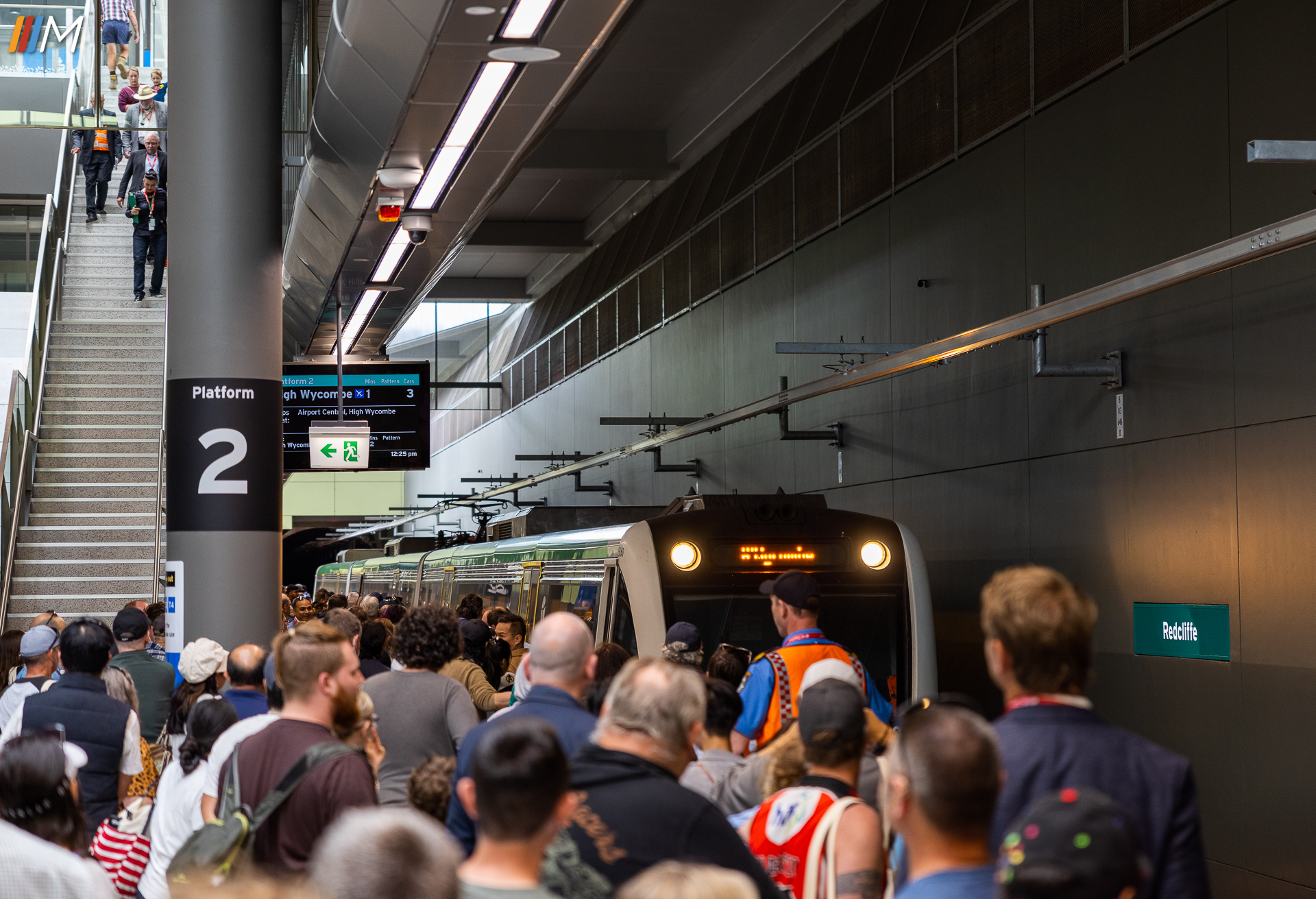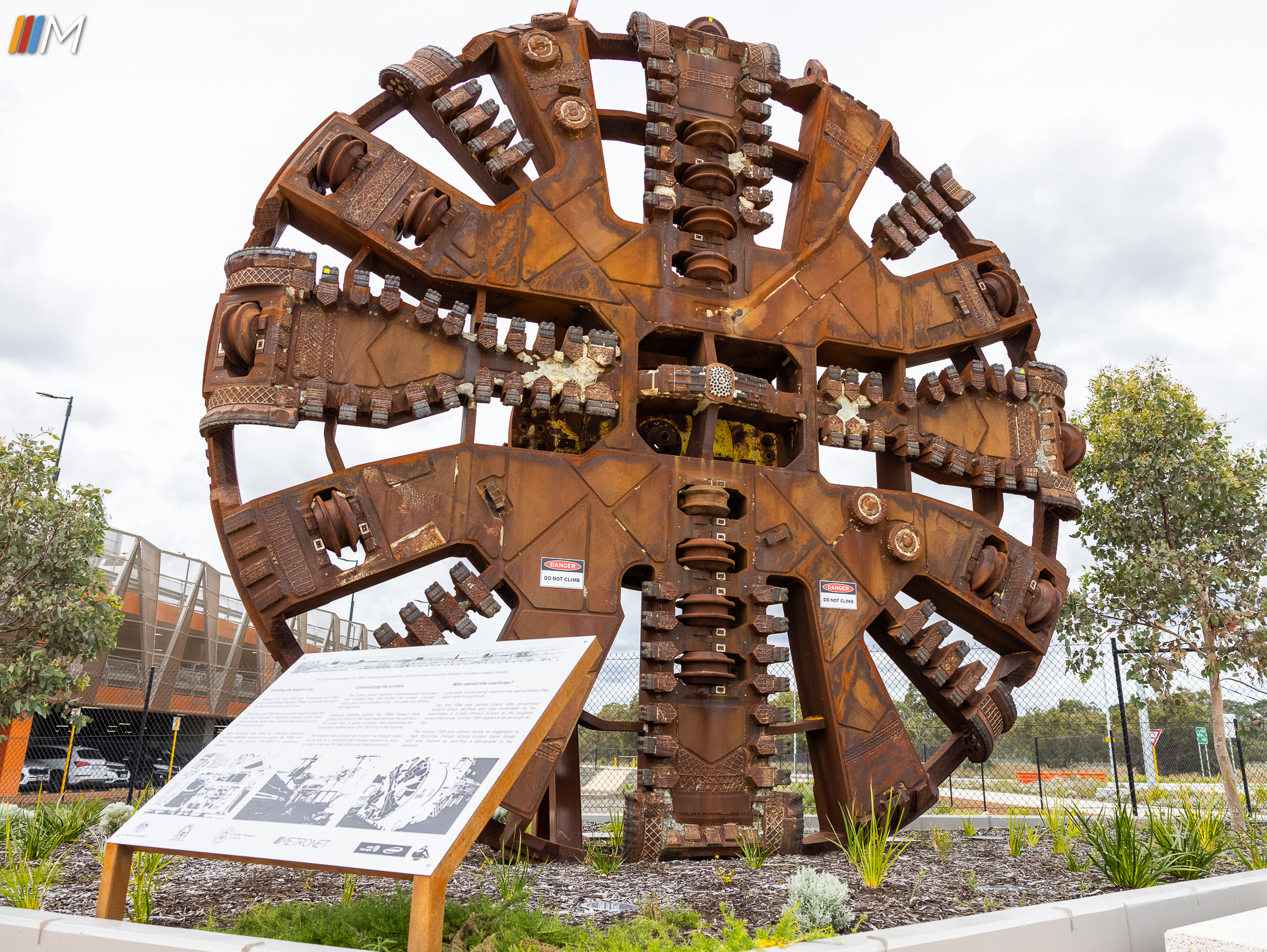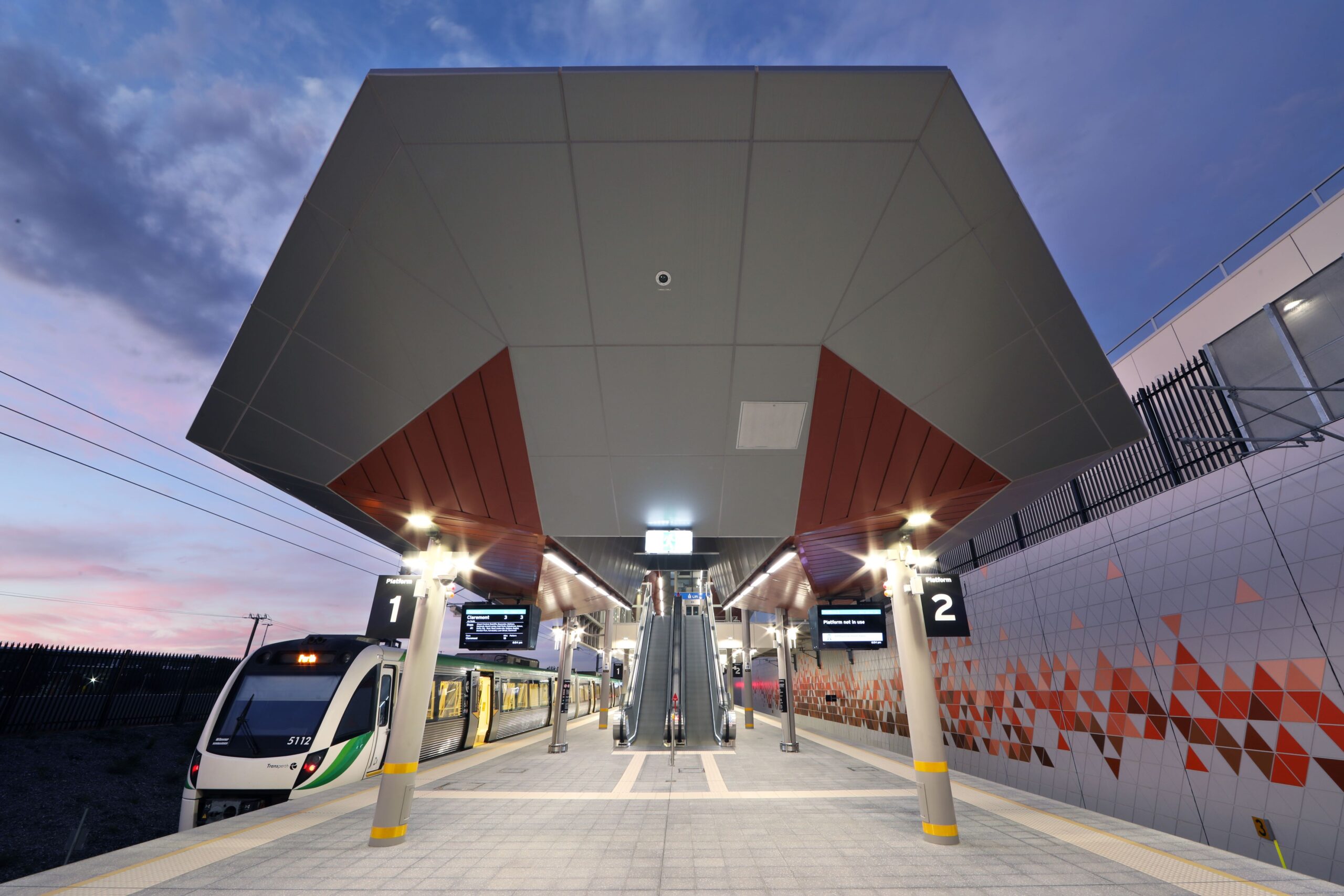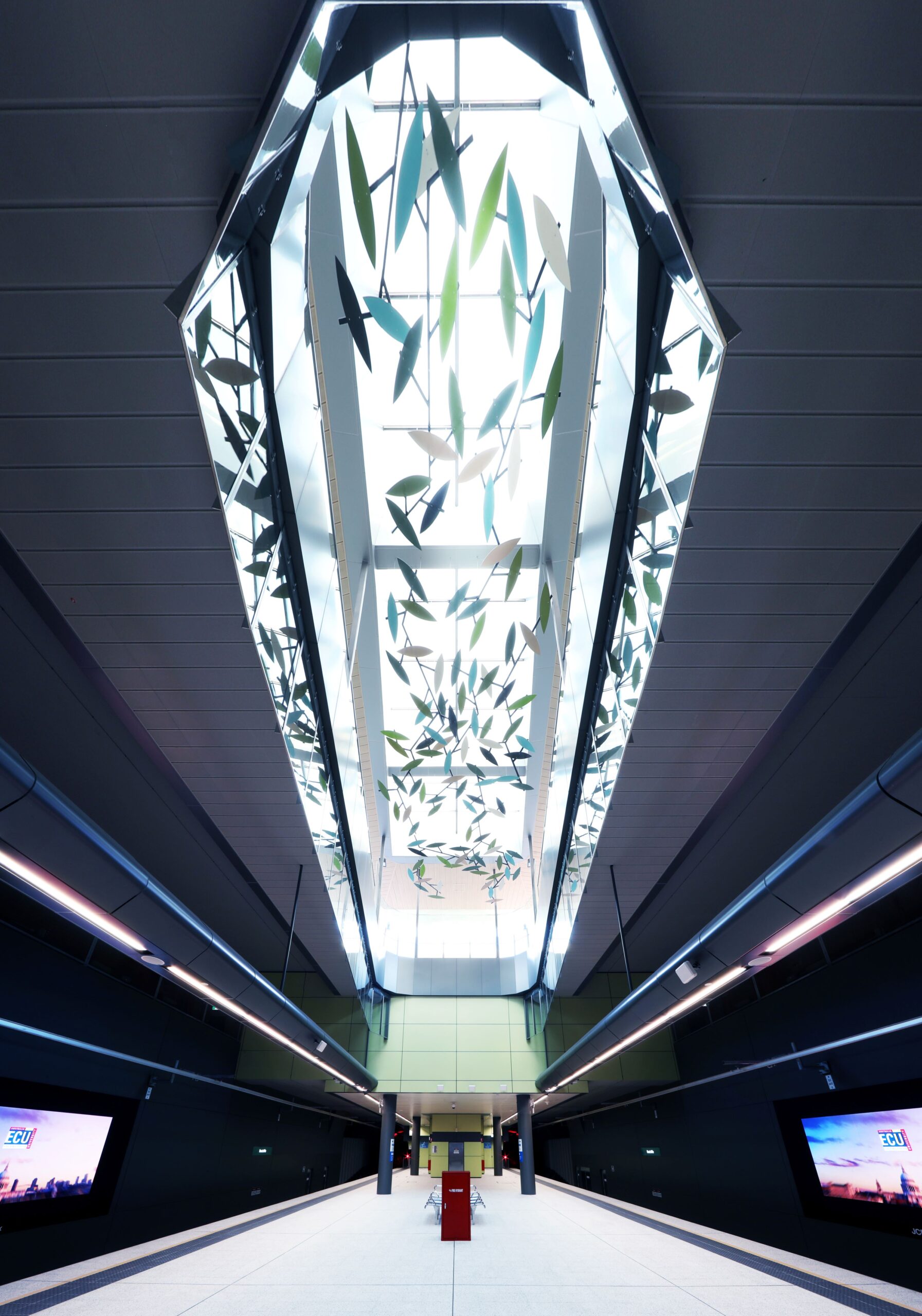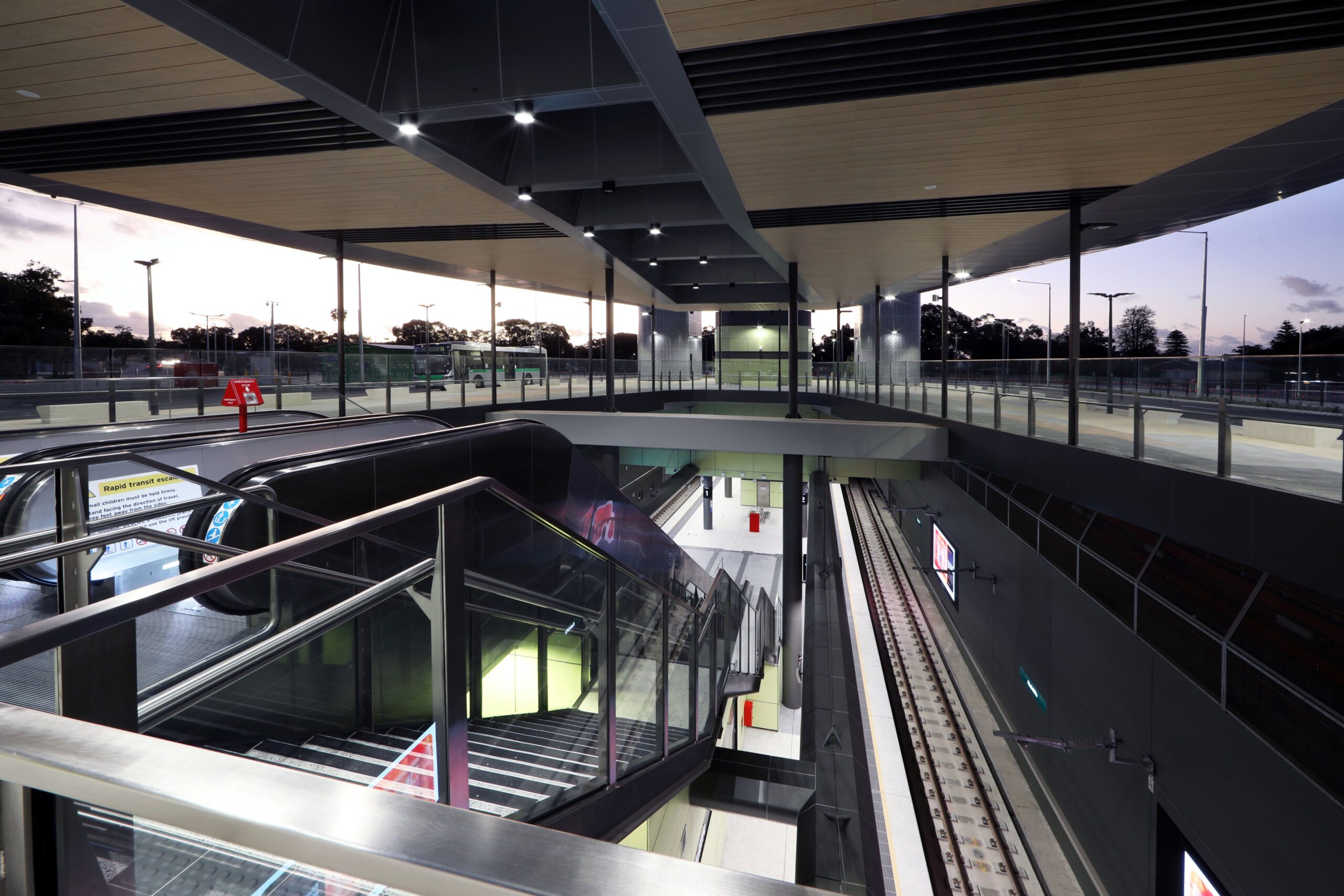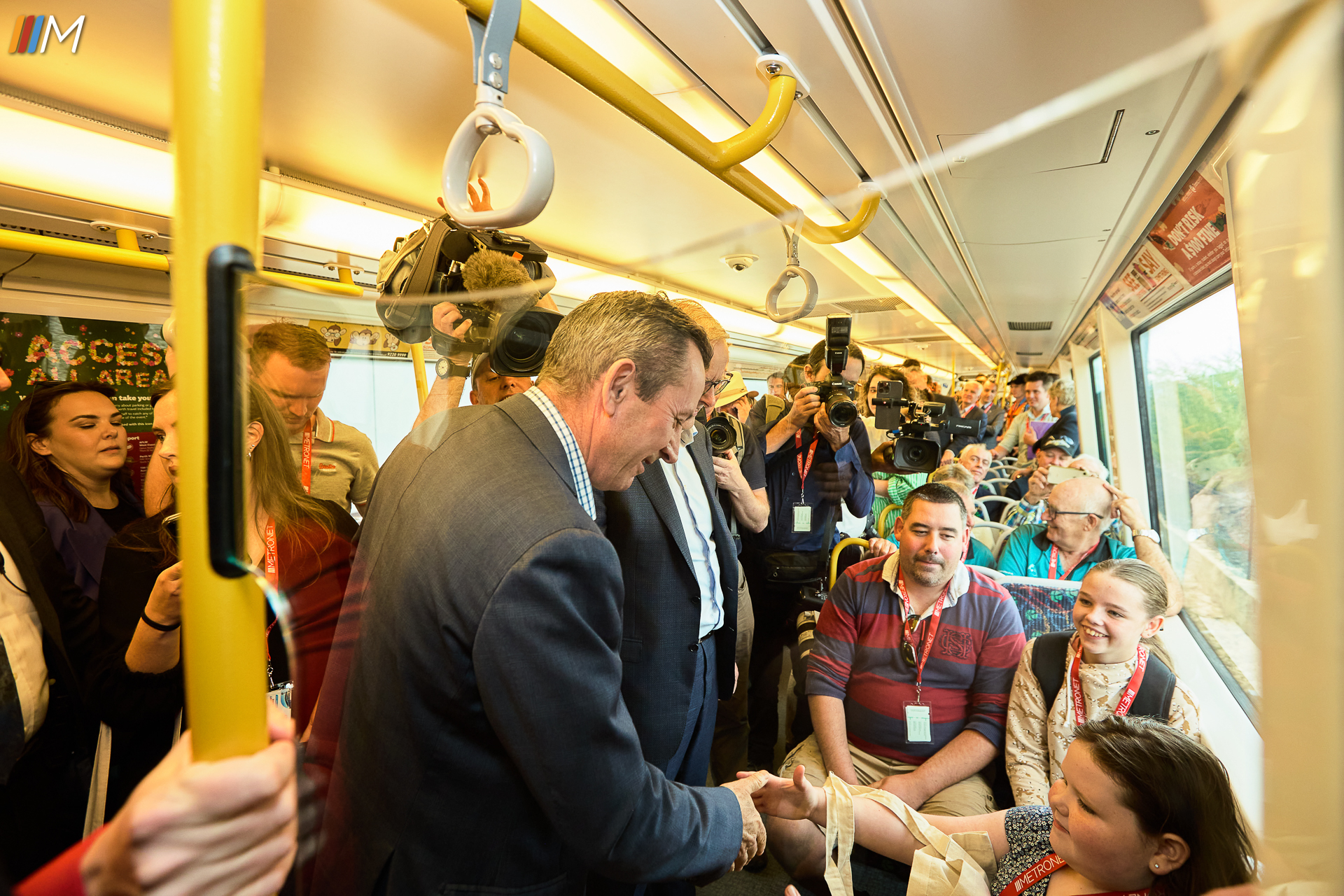Forrestfield-Airport Link – Social Outcomes
Describe WHAT you have done and HOW you have done it.
From 2016, the Public Transport Authority and Webuild-NRW JV worked collaboratively to meet early sustainability commitments – achieving a minimum ISC Excellent Design Rating and Leading As-Built Rating.
The commitment to a sustainable project started at the very beginning – with the decision to move the 8km rail line underground, reducing impacts to the environment above ground.
Importantly, this commitment was reiterated from the start of design with workshops to establish a sustainability plan, including goals and objectives of how we would:
• integrate environmental, social and governance elements into decision-making to reduce whole-of-life costs
• contribute to safe and healthy employees, communities and ecosystems
• drive economic, social and environmental innovation during the design and construction phases (and encourage the same from supply chains and service providers).
The strategy was followed over the life of the project and various social, environmental, governance and economic initiatives were implemented successfully.
Aboriginal engagement
Early in the planning phase of the project, PTA ensured that the right Aboriginal stakeholders would be engaged throughout the life of the project across the areas of cultural heritage, design recognition, employment and business.
The Whadjuk Nation, represented by the Whadjuk Working Party, was identified as having the primary and principle demonstrable ancestral links to the Wadjuk country and Native Title Claim area.
Engagement through all stages was important as several culturally sensitive areas and heritage registered sites were within or close to the project alignment, including the Swan River, Munday Swamp, Poison Gully Creek, as well as other fauna and flora.
Public art
Various forms of public art were created for the project – some with input from the local community, some tying the stations in with their local environment, others telling stories of cultural heritage. All have contributed to the long-lasting legacy of this unique piece of transport infrastructure.
Diverse and expert workforce
Webuild’s Corporate Principle on ethical and social responsibility aims at ensuring the safeguard of valuing both people and the environment, and the social and economic development of the places of work. In line with this, over the life of the project Webuild-NRW had more than 1500 employees representing 25 nationalities. We looked at opportunities to upskill employees wherever possible, with more than 6000 training occurrences.
Given the size and complexity of the project, tunnelling experts were part of the planning and construction teams. International experts also played a role in the project, including in the selection of the purpose-built tunnel boring machines, as well as ground monitoring and stabilisation.
Community consultation
Specific plans were developed for major activities and construction milestones. The information was tailored to individual community zones to ensure a ‘no surprises’ approach, providing advanced notifications of any impacts, for example vibration, noise and traffic impacts.
A key step in the action plans for each community zone was to meet initially with directly impacted residents and businesses. Community Reference Groups were established in each community zone, meeting regularly with the project team to discuss the project and determine issues of importance specific to each community area.
What were the OUTCOMES and how were those outcomes shared?
Aboriginal engagement
Consultation with the Whadjuk Noongar working groups faced some challenges, with the 12 representative Aboriginal families having some differing views. With PTA’s facilitation, smaller meetings were organised to ensure a comfortable environment for all families to feel heard and have their say on the project.
Over the life of the project, there was a strong focus on interpreting and enhancing the cultural heritage of the Whadjuk people in the final design, including the Aboriginal artworks at Airport Central Station.
The Aboriginal Stakeholder Group collaborated with Indigenous artist Maitland Hill to design the Noongar artworks for the High Wycombe Station. The artwork recognises three important local stories and themes.
Located in the station’s plaza, the laser-etched steel shapes and storyboards tell the stories of the nearby boodjari yorga boodjar (woman’s place of birth), the waadiny maam (watchman) and the moorditj yorga (strong woman). The artworks are tribute to the important roles these Noongar people have held and continue to hold in the area.
Public art
The Bayswater Urban Art Mural was the project’s first completed piece of public art. The 500m-long urban art mural, located on the rail reserve’s retaining wall, was developed as a collaboration between Perth artist Drew Straker and the PTA's Right Track program. Taking its inspiration from the six Noongar seasons, the mural is designed to be seen by vehicles driving past, coming to life as it is viewed in full. As part of Right Track, a number of schools and youth organisations were involved in the mural’s development, with young people working alongside Straker to paint the mural, learning urban art skills in the process
For Redcliffe Station, local residents were invited to share a short story/memory stories and memories of living in the area. Twelve stories were engraved on to steel leaves erected on the station’s walls. Leaf Stories is a two-part installation comprising of a suspended frame over the eastern void between the platform and concourse levels, and the wall-mounted story leaves.
At Airport Central Station, a two-part public art piece along the station’s atrium walls welcomes visitors to WA. Passengers travelling down from the elevated entry are greeted by 139 multicoloured sculptural elements along the station’s northern wall depicting birds and flight. Grounding this arrangement is a largescale glass panel installation on the southern wall, which describes the Noongar connection to the river and estuary waters, and the journeys traditionally taken by Aboriginal people as part of their spiritual obligations. Local artist and designer Anne Neil collaborated with Noongar artist John Walley to create these two pieces.
There are several artworks at High Wycombe Station:
• The station’s location in the foothills area serves as inspiration for the building’s façade, which features iron oxide-based colours representing the landscape and aluminium panels mimicking the rocky outcrops. At platform level, a 100m-long, 5.5m-high section of the retaining wall features a tessellated pattern of earthy red colours, reflecting the tones of the Darling Scarp.
• Along Maida Vale Road, the journey of travelling from the city to the hills is portrayed in the form of a 40m-long mural adorned with native flora and fauna, creating a striking entry statement to the station. Titled Homecoming, the mural is a collaboration between local artist Fieldey, PTA’s Right Track program and the City of Kalamunda. A number of local young people worked alongside Fieldey to brainstorm, design and install the art.
• As the epicentre of the project’s tunnelling operations, High Wycombe was a fitting location to honour the tunnel boring machines (TBM). Standing tall next to the multi-deck car park is one of the 70-tonne TBM cutterheads, recognising the monumental feat of building WA’s longest tunnels. Stories of tunnelling accompany this heritage installation.
Diverse Workforce
Webuild-NRW employed more than 100 employees with an indigenous background; equating to 2.57% of total man hours (the project target was 2%). We are particularly proud to have supported 25 people through Ngalla Maya’s Prison to Community Program - a Perth-based organisation which helps Indigenous people find employment and training after being released from prison. One of the employees was upskilled to a role assisting with TBM operations; following the end of tunnelling on our project, he moved to another tunnelling project in Melbourne.
Describe WHO benefited from your initiative, innovation, or approach?
The social and economic benefits of the Airport Line cannot be understated, particularly in boosting employment, residential and economic growth, especially around the stations.
For the Forrestfield-Airport Link project, the supply chain included more than 1200 businesses - 89 percent were Australian. With $1.1B in contract value, $980m was spent with Australian businesses.
Targets set for Aboriginal businesses include $25m minimum spend opportunity via invitation to tender, and a minimum procurement spend of $15m.
Further, the Airport Line has provided new, safe and sustainable public transport options for the 60,000-strong and notoriously underserviced catchment area of the eastern suburbs and foothills, significantly reduced travel times from the eastern suburbs to Perth’s CBD by public transport, reduced car dependency for both nearby residents and those travelling to the airport, including FIFO works and visitors to WA.
More than 90% of WA’s visitors arrive by air and now have an affordable option to reach the Perth CBD. The holistic approach to treat the Airport Line as an extension to the existing commuter network and not applying an airport surcharge puts Perth ahead of many other Australian capital cities.
It has also created additional capacity on Transperth’s existing Midland and Fremantle lines to meet growing passenger needs, relieved pressure on Perth roads, supported domestic and international tourism with improved access between the city and Perth Airport.
Our Public Art program has involved community members and Aboriginal stakeholders, and importantly created a legacy for generations to come. In addition to the community ownership this creates, it captures the stories of local residents and local history.
Through procurement, we supported the local economy and provided many firsts for WA businesses to enhance their skills and knowledge in large transport infrastructure projects, specifically tunnelling.
What LEGACY and UN SDG CONTRIBUTION was achieved?
Throughout the planning, design and construction stages of the Forrestfield-Airport Link project, our sustainability vision was for an innovative and sustainable project, providing a solution for enhancing the connectivity, liveability and prosperity of Perth and its eastern suburbs including the airport.
Now in operations, this vision was successfully achieved.
A lasting legacy has been achieved through the infrastructure’s a 120-year design life, as well as the upskilling of employees and businesses, economic support to WA and Australian businesses and local stories and history captures in the Public Art.
UN SDG contributions include:
Goal 8 – Decent work and economic growth
During design and construction, the project supported economic growth in delivering large-scale public transport infrastructure and the longest tunnel in WA. We supported a diverse workforce and implemented opportunities to up-skill people of all ages within the tunnelling and construction industry.
Goal 9 - Industry, Innovation, and Infrastructure
As well as providing new public transport opportunities to the eastern suburbs and Perth Airport, the project built resilient infrastructure (120-year design life), delivered innovative initiatives, and continued to support the local economy and workforces during the COVID pandemic.
The project received an excellence in design and architecture award from the Australian Institute of Architects (AIA) in 2023 for the Airport Central Station, where we have achieved a lasting legacy which reflects the welcoming Australian cultural identity to foreign visitors.
Goal 11 – Sustainable cities and communities
The social and economic benefits of the Airport Line cannot be understated, particularly in boosting employment, residential and economic growth, especially around the stations. The public transport link has opened up new opportunities for development in the area, with support of the local government. Opportunities for development near the station includes an aquatic centre and civic place for local residents.
[embed]https://youtu.be/1LCf78O7CUM[/embed]

